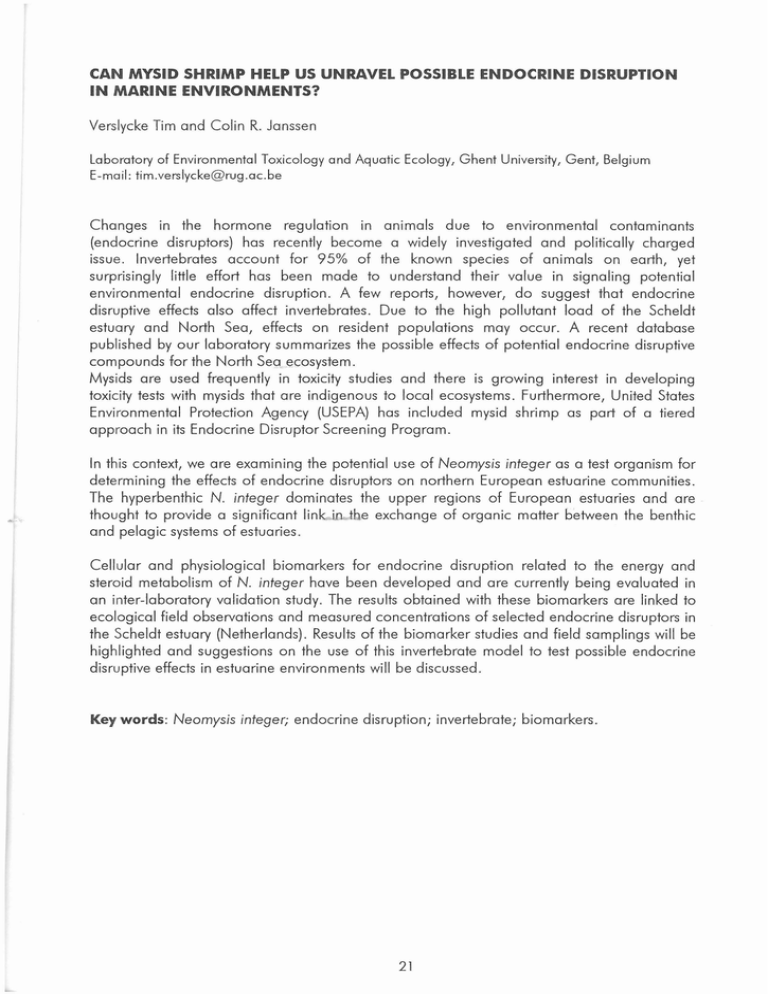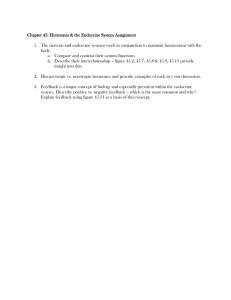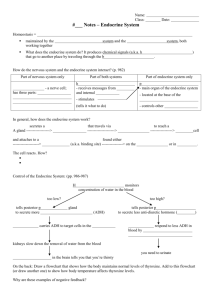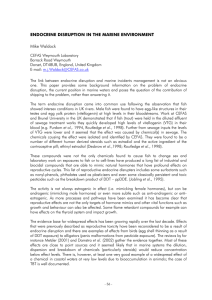C A N MYSlD SHRIMP HELP U S ... IN MARINE ENVIRONMENTS? R.
advertisement

C A N MYSlD SHRIMP HELP U S UNRAVEL POSSIBLE ENDOCRINE DISRUPTION IN MARINE ENVIRONMENTS? Verslycke Tim and Colin R. Janssen laboratory of Environmental Toxicology and Aquatic Ecology, Ghent University, Gent, Belgium E-mail: tim.verslycke@rug.ac.be Changes in the hormone regulation in animals due to environmental contaminants (endocrine disruptors) has recently become a widely investigated and politically charged issue. Invertebrates account for 95% of the known species of animals on earth, yet surprisingly little effort has been made to understand their value in signaling potential environmental endocrine disruption. A few reports, however, d o suggest that endocrine disruptive effects also affect invertebrates. Due to the high pollutant load of the Scheldt estuary and North Sea, effects on resident populations may occur. A recent database published by our laboratory summarizes the possible effects of potential endocrine disruptive compounds for the North Sea ecosystem. Mysids are used frequently in toxicity studies and there is growing interest in developing toxicity tests with mysids that are indigenous to local ecosystems. Furthermore, United States Environmental Protection Agency (USEPA) has included mysid shrimp as part of a tiered approach in its Endocrine Disruptor Screening Program. In this context, we are examining the potential use of Neomysis integer as a test organism for determining the effects of endocrine disruptors on northern European estuarine communities. The hyperbenthic N. infeger dominates the upper regions of European estuaries and are thought to provide a significant link.in, the exchange of organic matter between the benthic and pelagic systems of estuaries. Cellular and physiological biomarkers for endocrine disruption related to the energy and steroid metabolism of N. integer have been developed and are currently being evaluated in an inter-laboratory validation study. The results obtained with these biomarkers are linked to ecological field observations and measured concentrations of selected endocrine disruptors in the Scheldt estuary (Netherlands). Results of the biomarker studies and field samplings will be highlighted and suggestions on the use of this invertebrate model to test possible endocrine disruptive effects in estuarine environments will be discussed. Key words: Neomysis integer; endocrine disruption; invertebrate; biomarkers.







